Windows has undergone many changes from Windows XP to Windows 10. Today, the operating system has slightly different ways to do the same tasks. Windows 10 offers various ways to restart and shutdown a PC. In this article, we will see how to hide the power commands (Shut Down, Restart, Sleep, and Hibernate) in Windows 10. This can be useful if you are an administrator, and want to restrict user access to these tools.
Advertisеment
There are a number of ways to execute a power command in Windows 10.
The first one is obvious - you can use the power button in the Start menu:
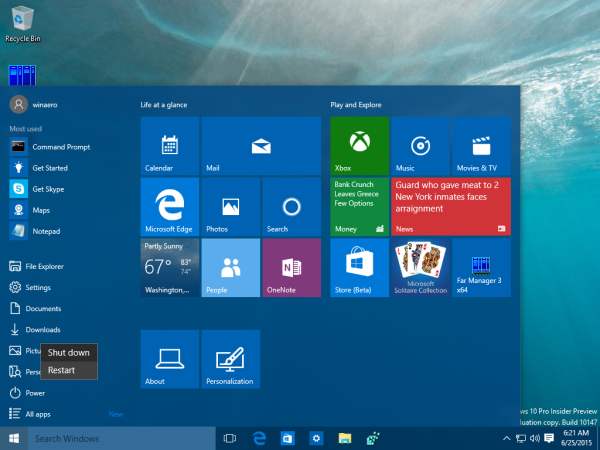 Open the Start menu and click the Power button. Its menu contains the required items. By the way, if you want to return to the graphical boot menu environment which contains troubleshooting options, hold down the Shift key and then press Restart.
Open the Start menu and click the Power button. Its menu contains the required items. By the way, if you want to return to the graphical boot menu environment which contains troubleshooting options, hold down the Shift key and then press Restart.
The second method is Power Users menu / Win + X menu. It can be opened in several ways:
- You can press Win + X shortcut keys together to open it.
- Or you can right click the Start button.
You only need to run the command "Shut down or sign out -> Restart":
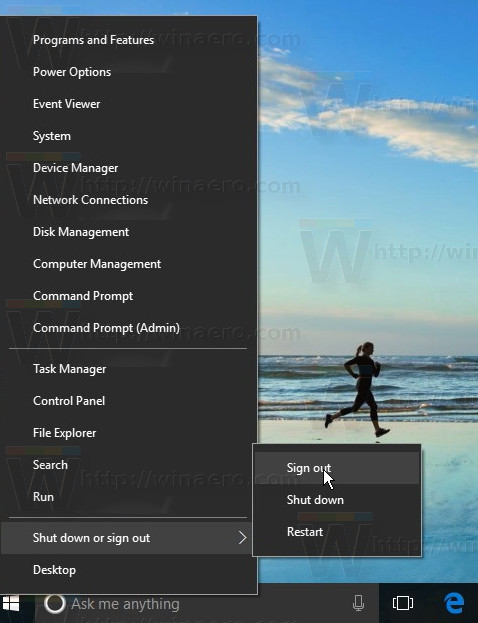
Finally, you can press Ctrl + Alt + Del. A special security screen will appear. There, click on the Power button in the bottom right corner.
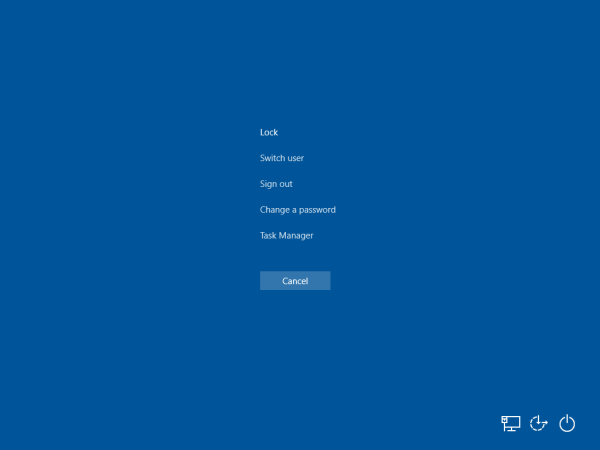
There are more methods to restart, shut down, or hibernate your PC. It is possible to disable the options Shut Down, Restart, Sleep, and Hibernate in the power menu for users in Windows 10. Here is how.
To disable Shut Down, Restart, Sleep, and Hibernate in Windows 10, do the following.
- Open the Group Policy Editor app for specific users or groups, or all users except administrators. Also, you can launch
gpedit.mscfrom the Win + R (Run) dialog directly in order to apply restrictions to the current user or all users of the computer.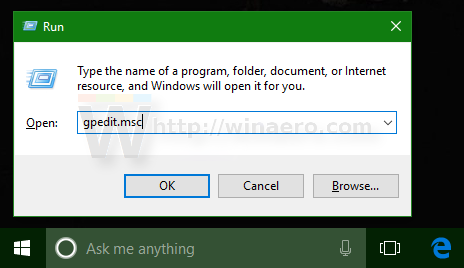
- On the left, navigate to the folder User Configuration > Administrative Templates > Start Menu and Taskbar.
- On the right, enable the policy Remove and prevent access to the Shut Down, Restart, Sleep, and Hibernate commands.
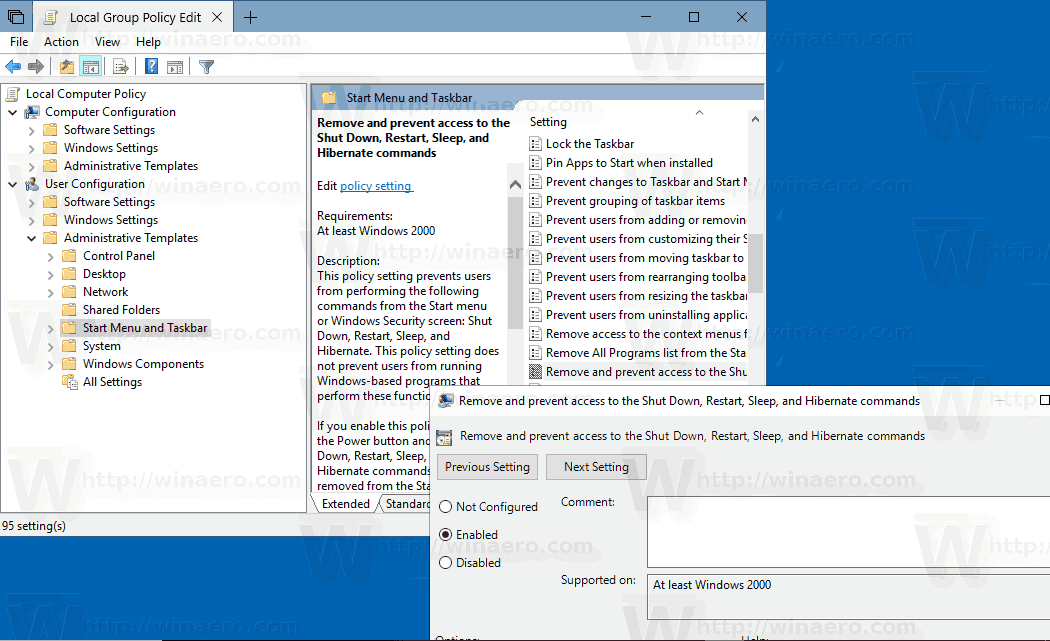
The same option can be configured for all users of the computer under Computer Configuration > Administrative Templates > Start Menu and Taskbar. See the following screenshot:
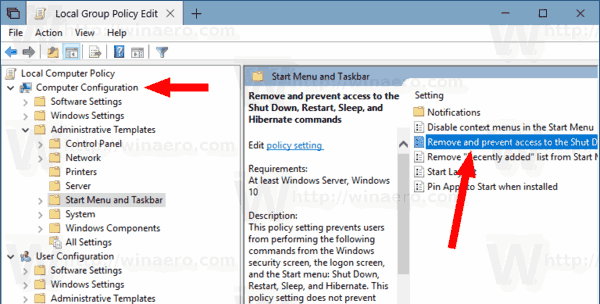
After enabling this policy, restart your computer.
The same can be done with a Registry tweak. Let's see how it can be done.
Restrict Access to Power Commands with a Registry Tweak
- Open the Registry Editor app.
- Go to the following Registry key.
HKEY_CURRENT_USER\Software\Microsoft\Windows\CurrentVersion\Policies\Explorer
See how to go to a Registry key with one click.
- On the right, create a new 32-Bit DWORD value HidePowerOptions.
Note: Even if you are running 64-bit Windows you must still create a 32-bit DWORD value.
Set its value to 1 in decimal. - Restart Windows 10.
- To apply this restriction to all users, create the value HidePowerOptions under the key HKEY_LOCAL_MACHINE\SOFTWARE\Microsoft\Windows\CurrentVersion\Policies\Explorer.
Tip: You can switch between HKCU and HKLM in Windows 10 Registry Editor quickly.
To save your time, you can use the following Registry files:
The undo tweak is included.
That's it.
Support us
Winaero greatly relies on your support. You can help the site keep bringing you interesting and useful content and software by using these options:
